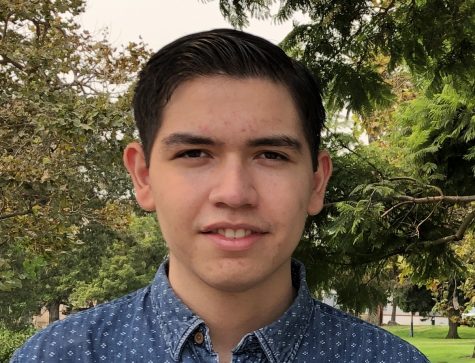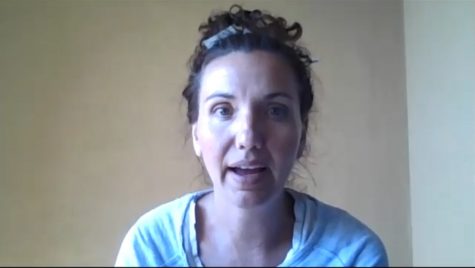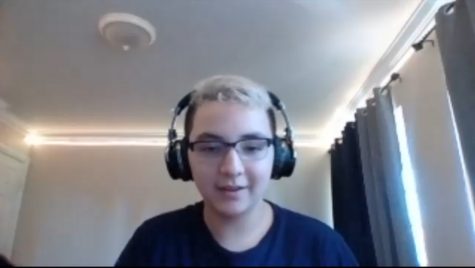
As a senior, I’m excited to return to the Crusader staff for the second year. I believe in journalism’s ability to highlight the key issues, trends,...
November 27, 2020
Since the onset of the COVID-19 pandemic, the once bustling gyms and fields of Bonita Vista High (BVH) have found themselves isolated, which has upended the functioning of Physical Education (P.E.) classes. As students and teachers adjust to remote learning, P.E. classes at BVH have found new ways to adapt to the circumstances to continue offering students a physical education.
When students entered distance learning in April, BVH P.E. classes were forced to devise immediate plans for instruction. Students used video session platform Google Meet to learn about various physical education subjects, along with independent work assigned by P.E. coaches.
However, upon the start of the 2020-2021 school year, BVH P.E. coach Heidi Arciaga knew her classes needed improvement to better accommodate the trials of remote learning. Alongside other P.E. teachers from across the district, Arciaga met as part of a district committee to create a core P.E. curriculum to be used during distance learning. Arciaga helped devise different instructional units for students and P.E. teachers to use, and believes the new curriculum brings needed change to P.E. classes.

“I knew I wanted to improve things from distance learning in Spring because I [felt like] my classes were not as high level as I would want. I knew coming in [the curriculum writing team that] I wanted it to be more engaging, have more information based around the sports and activities [and] have the kids working on their fitness and fitness levels at home on their own,” Arciaga said.
Today, most P.E. classes begin with a learning or wellness warm-up, which teachers use to mark attendance and track student participation. Sometimes teachers focus on the content of the current unit, and other times they invite students to discuss their well being with light-hearted questions such as “how was your weekend?” Teachers then present PowerPoint or Google Slides presentations that instruct students based on the current unit. After the lecture ends, students are ordered to begin independent exercise sessions asynchronously.
Every week, students are required to submit an exercise log; students must record at least 30 minutes of exercise with the activity of their choice. Arciaga provides videos of specific aerobic exercises to offer students examples of acceptable activities, but students are free to choose those of their liking.
“I think students have embraced [P.E.] and I think they like that they get to do what they want to do for their exercise,” Arciaga said. “If they like to go cycling, [they can] drive to Coronado [and] cycle the strand, or if they have access to a pool, they can do swimming laps.”
Sophomore Jesson Castañeda feels his P.E. classes bring refreshing independence but that they fall short of the traditional in-person P.E. experience as he lacks sports equipment at home and is unable to socialize with his friends in outdoor activities.

“For the first couple weeks, it felt a lot more independent and nice; [I] can do what [I] think is fun as long as [I’m] working out. As the weeks went on, it felt a bit more tedious, and because there’s so much [I] can do; [I] don’t have the right equipment for everything. I prefer [in-person P.E.] for sure because I can talk to my friends [and] have fun with them,” Castañeda said.
Castañeda has tried to adapt to the new circumstances; if he is familiar with the sport, he tries to learn and engage as much as possible. Though he feels his P.E. classes have not posed significant talent challenges. He wishes his P.E. classes could be more interactive.
“Personally, it’s not too challenging because I have a lot of friends that I like to play games outside of school so we stay in touch. [But] when it comes to class, there’s not much talking to each other. Teachers are doing their best to make conversation with people when [all they see is] a blank screen. [They ask,] ‘Can you guys show your webcams, please?’ No one does, which is kind of sad, but I do sometimes,” Castañeda said.
Arciaga believes challenges in her P.E. classes have largely been limited; however, she notes that remote learning means she must trust that students are completing their exercise logs honestly.
“The challenging part for a teacher is [that] I have to really trust that [students] [are] doing their exercise,” Arciaga said. “If a student wanted to lie and get away with it, they probably could. [I] just have to hope that they’re being honest.”
Arciaga has also found that there are unexpected benefits to P.E. in remote learning. By teaching students sports curriculum via online presentations, Arciaga feels that she is able to delve more deeply into sports games and procedures that would otherwise be too complex to teach in-person.
“[Before,] I was never able to show videos. I wouldn’t want it to stay this way forever but it’s been really interesting to do. [For instance, during] a football unit, [we] talk about pro-style offense, spread offense and things we would never be able to talk about [in] P.E.; it’s just too technical. [Now,] being able to use slides [to] watch clips of [National Football League (NFL)] games and different things like that [has] been really interesting,” Arciaga said.
Coming from middle school, freshman Lyra Rhoades began the 2020-2021 school year with the same expectations for her socially distanced P.E. classes.
“I thought that we would meet less and spend less time in sports, but we are going really in-depth with sports, which I’m pretty happy about because it’s compensating for not being able to actually go outside,” Rhoades said.
Rhoades feels the current class structure is “perfect” as they offer her more freedom to navigate her physical education without overwhelming her.
“[Online P.E. classes are] really open. We’re allowed to do whatever we want as long as we’re getting exercise. And I think it’s a perfect amount of physical education because it’s not overworking us to the point where P.E. class is a burden but it’s not so little that it’s completely useless,” Rhodes said.
Ultimately, Arciaga believes remote P.E. classes can’t live up to the traditional P.E. experience for students, but she is hopeful that teachers and students alike will make the most of the current circumstances.
“It’s a big shift but I’m just trying to work hard and do the best job. Even if it’s just considered P.E., I still have a lot of pride [in] being a teacher and running good classes, and I want it to stay that same way in virtual P.E. I feel comfortable and confident that I have done that,” Arciaga said.
Correction: April 30, 2021
An earlier version of this article misstated the name of sophomore Jesson Castañeda. He is Jesson Castañeda, not ‘Jessen.’

As a senior, I’m excited to return to the Crusader staff for the second year. I believe in journalism’s ability to highlight the key issues, trends,...